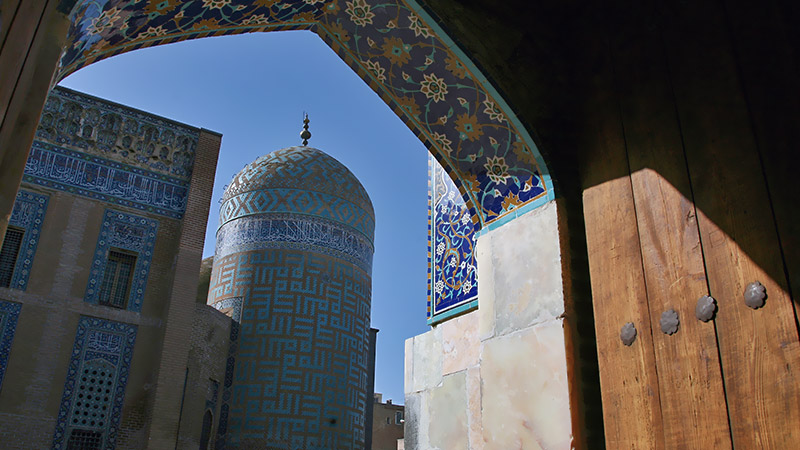 Signin with Google
Signin with Google Signin with Facebook
Signin with Facebook

 Places,History,Culture
Places,History,CultureEight Gates of Paradise in Sheikh Safi Shrine Ensemble

The pedigree of the Safavid dynasty
In the province of natural spas in northwest Iran, where the king of Alborz Mountains, mount Sabalan 4811 height spreads its domain over the fertile lands of Ardabil, a Sufi mystic became to change the fate of Iran.
Sheikh Safi al-din Ardabili, the great ancestor of the Safavid dynasty and renowned founder of the Sufi order made Ardabil a pilgrimage goal for mystics to reach "intoxicated" by the love of God in his Khanegah. Khanegah is a spiritual place for the retreat which resembles the paradise on the earth to selfless Sufis. The most famous Persian poets, from Hafez to Sa'adi and Rumi to Attar, have spread this mysticism through their poetry which has deeply influenced Persian culture.
The Sufi disciples of this Khanegah made the military power of the Safavid dynasty a century later. When Shah Ismail I, Sheikh Safi's descendant, was only a 13-year-old warrior established his kingdom relying on the power of Sufi followers as the first unified Iranian reign after 900 years of Arab Invasion. In fact, Safavids introduced the Shiite form of Islam which stayed the main religion of the country until now.

A sacred property of Sufism in Ardabil
Right in the middle of the city centre the shrine ensemble of Sheikh Safi and his conqueror descendant is a blend of Iranian and Medieval Islamic architecture mixing the grandeur of ornamented facades and interiors, with the delicacy of Persian artworks. One of the least visited World Heritage sites of Iran takes you immediately by the nice garden and a door into the courtyard leads to blue tile domes, but the best is yet to come!

A miraculous museum of Safavid art
As you enter a long prayer hall called "Ghandil Khaneh", with every step your eye is getting to explore the seven levels of the Sufi course. You will be taken by the gold paint decoration and ornamented vaulting design or Moqarnas on the roof. At the end of the hall, the oldest part of the complex is the wood carving coffin of Sheikh under a double-shelled dome alongside the tomb of Shah Ismail Safavi who shaped the history of the country.

On the left side of Sheikh Safi, there is a pathway to take you to the octagonal room of "Chini Khaneh" or China room where stucco tiers are carved in the shape of wares and the fantastic echo-absorbing slices steal your sight in a blink of an eye. About 1000 stucco niches were cut in 8 walls for display of donative porcelains which China has gifted to the 5th Safavid king, Abbas the Great. This brilliant plasterwork is a smaller version of the masterwork in the music room of Ali Qapu Palace in Isfahan.
The best collections of Chinese Blue and White Porcelains in the world
In the 14th Century, Chinese potters invented a technique to make underglaze blue and white porcelain which remained a secret to the rest of the world for 400 years later when the sea routes unlocked China and world travellers such as Marco Polo set path to the far east. The Chinese porcelain ware has to take a voyage of thousands of miles to get to Iran through the Silk Road making the ware worth its weight in gold. The most magnificent porcelains from the 14 to 16th Centuries were donated to the Ardabil shrine by Shah Abbas I. Almost all of the wares have been rubbed by Russian corps later but now a collection of porcelains are on display around Chini Kahneh to introduce Ardabil as one of the holders of the best collections of Chinese Blue and White Porcelains in the world.

